| |
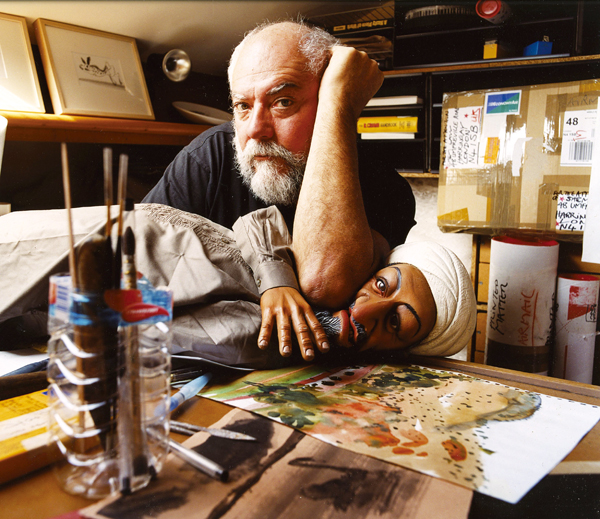 |
|
| ▲ Photo courtesy Roger Law |
It has been a long hard march from the Cambridgeshire Fens, where I was born, to the sweatshops of Jingdezhen, China’s Porcelain City, but you’ll be relieved to know that this is the short version of my story.
I was known for making caricatures of the good, the bad and the ugly, most famously for the popular, satirical and topical television puppet series Spitting Image.
The show ran on British TV from the 1980s to the late 1990s and lampooned British establishment figures including Margaret Thatcher and Prince Charles. It was franchised around the world, including Russia and America.
Over a thousand puppets, which started life as clay heads, were made in the Spitting Image factory. The team and I became skilled and efficient sculptors.
To keep marginally sane we began to make ceramics on the side. We modelled in clay and the finished product was made in Stoke-on-Trent. We made a lot of very ugly mugs and sold them through small ads in the back of Private Eye.
| |
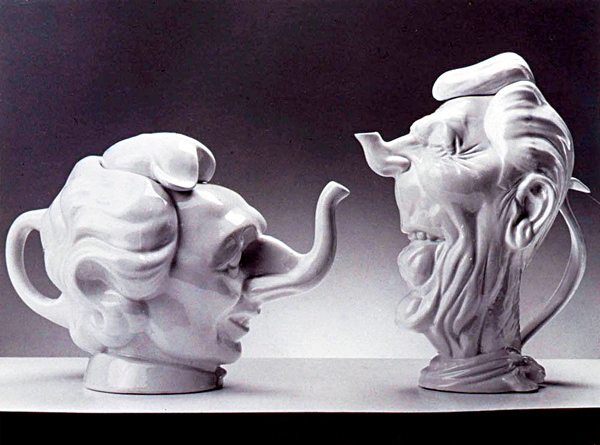 |
|
| ▲ Such ugly mugs were sold through ads in the back of Private Eye. Photo courtesy Roger Law |
Stoke-on-Trent was an eye-opener to me. The skills in the workshop were phenomenal and practical. Stoke’s mould-makers would simplify our satirical offerings and make them profitable, paying for our next ceramic joke.
As part of the process I fell in love with the small workshops and the skill of Stoke’s workers. That was probably my first big mistake. But we can’t choose who or what we fall in love with.
I began making ceramics with the potter Janice Tchalenko and our very first collaboration was a small exhibition of the Seven Deadly Sins for the Victoria and Albert Museum – an easy subject as we were both on nodding terms with most of them.
The results were marginally less vulgar than Spitting Image’s ugly mugs. I like to think they had vulgarity with style.
| |
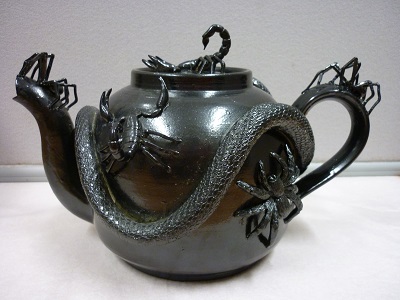 |
|
| ▲ The black teapot of the Fens. Photo courtesy Roger Law |
Years ago in the Fens people would talk about ‘the black teapot’ which allegedly contained a brew of opium poppy tea to be served up to the cantankerous and the senile well past their sell-by date.
As a child I would hear people saying “It’s time we gave him the black teapot” and I would wonder, with horror, what the black teapot looked like. So Janice and I decided to make one.
I wonder when, in the not-too-distant-future, I will have to fill it with poppy tea and drink it myself.
When Spitting Image came to an end I deported myself to Australia, drawing and painting the strange flora and fauna – dancing crabs, leaping frogs, weedy sea dragons and, of course, the platypus — of that sun-burnt country.
During my time there, the shadow of China began to loom large. Australia exports raw materials – iron ore, copper, zinc etc. – in huge quantities directly to China.
To keep things respectable, Chinese culture is consequently greatly appreciated in Australia.
| |
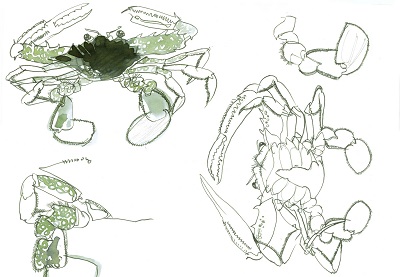 |
|
| ▲ The strange creatures of Australia. Photo courtesy Roger Law |
I saw an exhibition by a Chinese artist, Ah Xian. He was the first contemporary artist to breath new life into the traditional designs of Jingdezhen. Ah Xian became a friend and took me to Jingdezhen.
Jingdezhen is to porcelain as Hollywood is to film. It was also the Imperial Pottery and by 1650 the city’s famous blue and white ware (Qing Hua) was worth its weight in gold in European cities.
Even into the modern day, artists as diverse as Ah Wei and Edmund de Waal have sprinkled their holy water on the city. Potter Takeshi Yasuda has committed himself to Jingdezhen and set up his own studio and workshop there.
On my first visit in 1998, I found Jingdezhen just as exciting as Stoke-on-Trent, with added disadvantages.
The factories were even grimmer than those of Stoke – no doors in the doors, no glass in the windows, the scuffed earth providing the floor, humid in the summer and brass-monkeys in the winter.
I found myself falling in love all over again.
Pots and molds were set out to dry everywhere, even along the railway tracks. The only things that were sacred in the workshops were your tools and your lunch.
| |
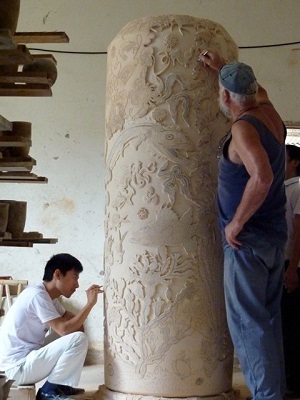 |
|
| ▲ Photo courtesy Roger Law |
To have called Jingdezhen dirty would have maligned the word. Everything at that time was filthy – except the people.
How they achieved it was a small miracle. The men and women emerged spotless from the workshops, the women’s high heels just as new, while I would be head to foot in clay and a heavy dusting of celadon glaze.
There have been massive changes since those early days. Bicycles morphed into motorbikes which became cars and then four-wheel drives.
Business has been good. The Sculpture Factory, where I stay, is now surrounded by high-rise flats filled with the city’s burgeoning middle-class.
The workshops even have concrete floors, but the potteries still ensure plenty of carcinogenic intake of lead, zinc oxide, cadmium and solvents.
It took me a while to find the right formula for making my own pots. I tried sculpting but porcelain does not like attachments and the artisans like them even less.
I took stock and looked around. I eventually followed the Jingdezhen style of lightly carving and firing pots with a celadon glaze, which porcelain approves of. Much can be achieved in the workshops by meeting the artisans half way.
I still had to find a carver willing to work with me, which was problematic as I wanted to cut my designs deep into the porcelain.
I eventually found the young, hungry, and happy-to-give-it-a-go Mr Wu Songming.
| |
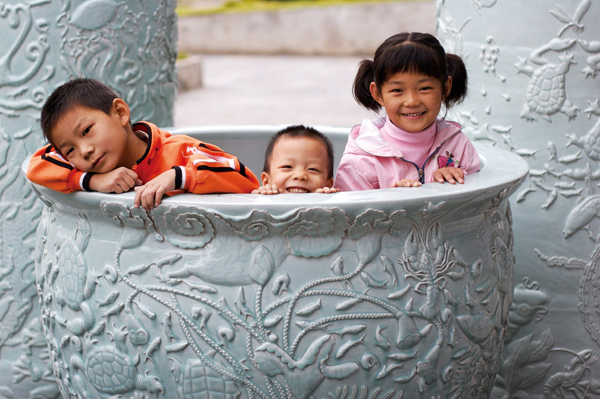 |
|
| ▲ Finding peace in the pots of Jingdezhen. Photo courtesy Roger Law |
It took a few trials, and an awful lot of failures, but that was OK. The only thing you learn from success is the address of a good lawyer.
The images we carved all came from my Australian sketch books. As we started to get results we became bolder. The carving became deeper and the pots bigger.
We moved to the Big Pot Factory which now makes my six foot pots three inches thick.
Now Mr Wu can carve to a depth of 20 millimetres. The results are stronger images, which can take a luscious thick celadon glaze.
Over the years the Big Pot Factory has even adopted deeper carving for their own decorated Buddhist temple pots, so working in Jingdezhen can be a two-way learning curve.
I was only ever interested in puppets and caricature as a means to a satirical end. Working in Jingdezhen has taught me that ceramics can also be witty and playful.
In November and December of last year Sladmore Contemporary in Mayfair gave me a solo exhibition. It was an overnight success which has taken me only a decade to accomplish. |

























